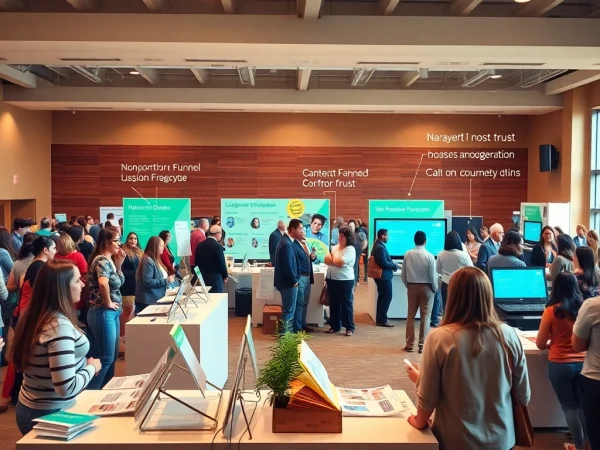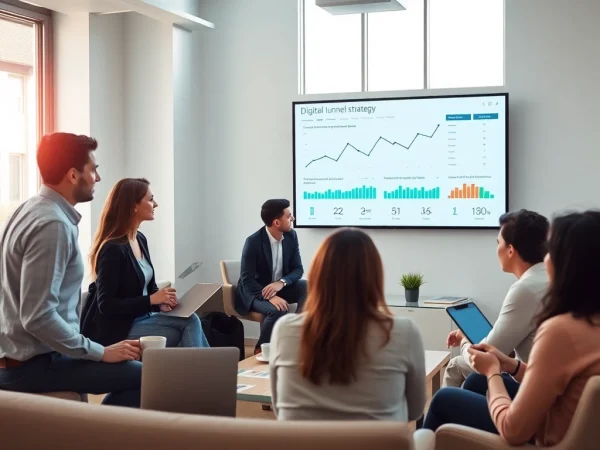Building Effective Funnels for Nonprofits: Strategies for Success
Understanding Funnels for Nonprofits
In today’s digital age, nonprofits face an ever-increasing challenge to engage supporters, raise awareness, and drive donations. One effective strategy that has emerged is the use of funnels, a concept originally popularized in marketing. Understanding how to create tailored Funnels for nonprofits can significantly bolster an organization’s ability to achieve its mission by effectively guiding potential supporters along their journey from mere awareness to action.
What is a Funnel?
A funnel is a visual representation of the customer journey, illustrating the steps that potential supporters take from first becoming aware of an organization to ultimately donating or volunteering. In essence, a funnel outlines the transformation of a general audience into committed donors or volunteers. The funnel’s shape indicates the gradual decrease in the number of individuals as they progress through various stages, ultimately narrowing down to a select few who take action. In the context of nonprofits, these stages typically include Awareness, Engagement, and Conversion.
Importance of Funnels for Nonprofits
Nonprofits often rely on supporters to sustain their operations, and understanding the funnel process allows organizations to streamline their outreach efforts. By employing funnels, nonprofits can efficiently direct their resources to reach the right audience, maintain engagement, and ultimately convert interest into actionable support. This targeted approach can lead to more effective campaign strategies, improved donor retention rates, and better overall fundraising success.
Types of Funnels Relevant to Nonprofits
There are several types of funnels that can be particularly advantageous for nonprofits, including:
- Awareness Funnel: This funnel is geared toward attracting new supporters and raising awareness of the nonprofit’s mission.
- Engagement Funnel: This focuses on building connections with supporters, providing them with meaningful content, and cultivating a sense of community.
- Donation Funnel: This funnel is specifically designed to guide potential donors through the steps required to make a contribution, making the donation process seamless and straightforward.
- Event Funnel: Tailored for event-based initiatives, this funnel attracts participants, encourages registration, and drives attendance.
Key Components of a Nonprofit Funnel
Aware: Attracting Your Audience
The first step in any funnel is creating awareness. Nonprofits need to draw attention to their cause using various digital marketing tactics. This can include social media campaigns, content marketing, partnerships, and search engine optimization. Understanding the target audience is crucial; knowing what resonates with them allows nonprofits to create relevant, compelling content that will attract supporters and encourage them to learn more.
Engage: Fostering Connections
Once awareness is established, the next stage is engagement. This is about developing a connection with potential supporters through valuable and meaningful interactions. Email campaigns, newsletters, social media posts, and community events can foster relationships that are deeper than mere transactional interactions. By sharing stories that reflect the impact of their work and encouraging conversations, nonprofits can effectively build rapport with their audience, leading to increased trust and long-term commitment.
Convert: Turning Supporters into Donors
The final stage of the funnel is conversion, where engaged individuals are persuaded to take action, such as making a donation or volunteering. A streamlined donation process is essential, including easy access to payment options and a user-friendly interface on the nonprofit’s website. Strategies can also include highlighting success stories, offering various giving options, and demonstrating the tangible impact of donations. By creating urgency and compelling calls to action, nonprofits can significantly increase their conversion rates.
Best Practices for Funnels for Nonprofits
Crafting Compelling Content
Content plays a pivotal role in all stages of a nonprofit funnel. It should be relevant, engaging, and tailored to the audience’s interests. Storytelling is particularly powerful; sharing testimonials, success stories, and insights into how funds are utilized can foster an emotional connection. Additionally, varying content formats, such as videos, infographics, and blog posts, can cater to different preferences and keep the audience engaged.
Utilizing Data for Optimization
Data analytics is crucial for evaluating the performance of nonprofit funnels. By tracking metrics such as click-through rates, donation conversions, and social media engagement, nonprofits can identify areas for improvement. A/B testing different messages, visuals, and calls to action can also provide insights into what resonates best with supporters. Utilizing tools like Google Analytics can offer a comprehensive view of audience behavior and help adapt strategies effectively.
Implementing Feedback Loops
Creating feedback loops is essential for continuous improvement. Encouraging current supporters to share their insights through surveys and direct feedback can help nonprofits refine their funnels. Understanding the donor experience and recognizing any potential pain points allows organizations to make necessary adjustments, ensuring that they provide the best possible experience for their supporters.
Real-life Examples of Effective Funnels
Case Study: A Successful Nonprofit Campaign
To understand the impact of effective funnels, we can examine a case study of a nonprofit campaign that successfully utilized the funnel model. This nonprofit, focusing on environmental conservation, developed a multi-channel marketing strategy to raise awareness about their latest project. Their approach combined compelling storytelling via social media with targeted email campaigns to engage their audience actively.
By offering informative content, such as blog posts and videos on the importance of ecosystems, they were able to create awareness. Engaging their audience through interactive webinars allowed them to foster connections, while a simple, clear donation link led to high conversion rates. The organization reported a significant increase in both donations and community engagement, demonstrating the power of a well-structured funnel.
Lessons Learned from Nonprofit Funnels
Every nonprofit can learn valuable lessons from successful funnel implementations. One key takeaway is the importance of understanding target audiences and tailoring strategies to their specific needs and preferences. Additionally, prioritizing a seamless user experience in the donation process is crucial for maximizing conversions. Nonprofits should continually analyze their funnel performance metrics and tweak their approaches based on real-time data to improve outcomes.
Innovative Strategies Used by Nonprofits
Innovation is key in the nonprofit sector, and many organizations have adopted unique strategies to enhance their funnels. For instance, gamifying the donation process through milestones and challenges has proven effective, turning donors into active participants in fundraising efforts. Furthermore, leveraging social proof through testimonials, peer-to-peer fundraising, and influencer partnerships has allowed nonprofits to reach wider audiences and instill greater trust in potential supporters.
Measuring Success in Nonprofit Funnels
Key Metrics for Funnel Performance
To assess the effectiveness of their funnels, nonprofits must track several key metrics. Common performance indicators include:
- Awareness Metrics: This may include website traffic, social media engagement, and email open rates, indicating how well the nonprofit is reaching its audience.
- Engagement Metrics: Tracking time spent on site, content shares, and email click-through rates provides insights into how well the audience is connecting with the nonprofit’s messaging.
- Conversion Metrics: The number of donations, volunteer sign-ups, and campaign participation rates gauge the success of the funnel in mobilizing supporters.
Tools for Tracking Funnel Efficiency
There are various tools available to help nonprofits track the efficiency of their funnels. Platforms like Google Analytics provide robust data about website traffic and user behavior. Email marketing software can track engagement rates and conversions from campaigns, while social media management tools can measure audience interaction and reach. Implementing CRM systems can also help nonprofits manage donor relationships and analyze interactions over time, ultimately optimizing the funnel experience.
Adjusting Strategies Based on Performance Data
Finally, the process of measuring success is incomplete without implementing changes based on performance data. Nonprofits must be willing to pivot their strategies according to the insights gained from metrics. Whether it means altering content, redefining target audiences, or enhancing the donation process, being adaptable allows nonprofits to remain relevant and effective amid changing circumstances. Regularly assessing and adjusting the strategies ensures sustainability and effectiveness in achieving their missions.









